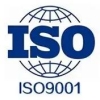The difference between optical fiber sensor and photoelectric sensor

Optical fiber sensor is a kind of photoelectric sensor with amplifier separation type, optical fiber sensor also has reflector type, regression reflection type and diffusion reflection type. The function of optical fiber sensors is somewhat similar to that of photoelectric sensors, which can detect whether objects exist at a distance.
The difference is that the size of the optical fiber sensor is smaller than that of the photoelectric sensor, and the spot diameter is much smaller than that of the photoelectric sensor. In addition, the optical fiber sensor is composed of optical fiber and optical fiber amplifier, which makes it can adapt to more harsh environments, such as oil rings, high temperatures and so on. Because of the advantages of optical fiber and its digital display and management, it is the mainstream of sensor development at present. Next, the differences between the two are analyzed one by one from the aspects of principle, application and selection.
Photoelectric sensor is an optically controlled switch that can be automatically opened and closed at a specified position. The photoelectric sensor has the characteristics of long sensing distance, easy to adjust the sensing distance, and can realize non-contact detection. Therefore, in some scenarios, photoelectric sensors are often used to detect the presence of objects at a distance.
Ⅰ, The working principle
1, photoelectric sensor: using photoelectric elements as detection elements of the sensor. It first converts the measured change into an optical signal change, and then converts the optical signal further into an electrical signal with the help of an optoelectronic device. Photoelectric sensor is generally composed of light source, optical path and photoelectric element.
2, optical fiber sensor: Optical fiber sensor is a sensor that converts the state of the measured object into a measurable optical signal. The working principle of the optical fiber sensor is to send the light source incident beam through the optical fiber into the modulator, the interaction between the modulator and the measured parameters outside the modulator, so that the optical properties of the light such as the intensity of the light, wavelength, frequency, phase, polarization state, etc. change, become the modulated optical signal, and then through the optical fiber into the photoelectric device, after the demodulator to obtain the measured parameters.
Ⅱ. Application
1, photoelectric sensor application field:
(1) Dust turbidity monitoring is one of the important tasks to prevent industrial smoke pollution. To eliminate industrial smoke pollution, we must first understand the smoke emission situation, so we must monitor the smoke source, automatic display and alarm. The turbidity of smoke in a flue is measured by the amount of light it changes as it passes through the flue. If the flue turbidity increases, the light emitted by the light source will increase due to the absorption and refraction of the soot particles, and the light reaching the photodetector will also decrease. Therefore, the intensity of the output signal of the photodetector can reflect the change of flue gas turbidity.
(2) Application of photocell in photoelectric detection and automatic control Photocell as a photodetector, its basic principle is the same as the photodiode, but its basic structure and manufacturing process are not the same. Because the photocell does not need external voltage when working, the photoelectric conversion efficiency is high, the spectral range is wide, the frequency characteristics are good, and the noise is low, so it is widely used in the fields of photoelectric sensing, photoelectric coupling, grating ranging, laser collimation, thin film sound, ultraviolet monitor and gas turbine extinction protection device.
2, the application of optical fiber sensors: measurement of physical quantities, such as insulator pollution, magnetism, sound, pressure, temperature, acceleration, gyroscope, displacement, liquid level, torque, photoacoustic, current and strain.
Ⅲ. Selection
Selection of optical fiber sensor
(1) Determine the induction distance; Need to be used with amplifier;
(2) Working type: optical fiber sensor, reflective optical fiber sensor, regional optical fiber sensor;
(3) Comparison of the induced cross section of the object on the tested side with the spot size of the photoelectric sensor under stable working state; The optical fiber sensor has the characteristics of small spot detection;
(4) Output form, PNP/NPN; Related to PLC, PNP is mainly used in Europe, such as Siemens, and NPN is mainly used in Asia, such as OMRON.
Mechanical engineer selection of main keywords: sensing distance, work type, spot size, PNP/NPN.
Photoelectric sensor selection
(1) Determine the induction distance; Photoelectric sensor has the characteristics of long detection distance;
(2) Determine the type of work: reflector photoelectric sensor, reflector photoelectric sensor, regression reflector photoelectric sensor;
(3) Comparison of the induced cross section of the detected object with the spot size of the photoelectric sensor when it is in stable working state;
(4) Output form, PNP/NPN; Related to PLC, PNP is mainly used in Europe, such as Siemens, and NPN is mainly used in Asia, such as OMRON.
(5) Wiring mode, guided extraction type/connector type; Connector form more use of maintenance and replacement;
(6) Others: working environment (whether it needs oil and dust proof, etc.)
Die Produkte, an denen Sie interessiert sein könnten
 |
TPCM-2.4-5 | CMC 2.41MH 5A 2LN TH | 6894 More on Order |
 |
62054-P2S02 | XFRMR TOROIDAL 15VA CHAS MOUNT | 3526 More on Order |
 |
62051-P2S02 | XFRMR TOROIDAL 15VA CHAS MOUNT | 3312 More on Order |
 |
62045-P2S02 | XFRMR TOROIDAL 10VA CHAS MOUNT | 2430 More on Order |
 |
62025-P2S02 | XFRMR TOROIDAL 5VA CHAS MOUNT | 3924 More on Order |
 |
62021-P2S02 | XFRMR TOROIDAL 5VA CHAS MOUNT | 5058 More on Order |
 |
62012-P2S02 | XFRMR TOROIDAL 3.2VA CHAS MOUNT | 3204 More on Order |
 |
62073-P2S02 | XFRMR TOROIDAL 35VA CHAS MOUNT | 5292 More on Order |
 |
70074K | XFRMR TOROIDAL 35VA THRU HOLE | 6840 More on Order |
 |
70072K | XFRMR TOROIDAL 35VA THRU HOLE | 5634 More on Order |
 |
70054K | XFRMR TOROIDAL 15VA THRU HOLE | 4716 More on Order |
 |
70031K | XFRMR TOROIDAL 7VA THRU HOLE | 8658 More on Order |
 |
70013K | XFRMR TOROIDAL 3.2VA THRU HOLE | 4392 More on Order |
 |
70011K | XFRMR TOROIDAL 3.2VA THRU HOLE | 7560 More on Order |
 |
70003K | XFRMR TOROIDAL 1.6VA THRU HOLE | 2520 More on Order |
 |
70002K | XFRMR TOROIDAL 1.6VA THRU HOLE | 5040 More on Order |
 |
62015-P2S02 | XFRMR TOROIDAL 3.2VA CHAS MOUNT | 3780 More on Order |
 |
70025K | XFRMR TOROIDAL 5VA THRU HOLE | 4068 More on Order |
 |
62033-P2S02 | XFRMR TOROIDAL 7VA CHAS MOUNT | 6480 More on Order |
 |
62024-P2S02 | XFRMR TOROIDAL 5VA CHAS MOUNT | 4824 More on Order |
 |
62084-P2S02 | XFRMR TOROIDAL 50VA CHAS MOUNT | 7284 More on Order |
 |
70034K | XFRMR TOROIDAL 7VA THRU HOLE | 8088 More on Order |
 |
70005K | XFRMR TOROIDAL 1.6VA THRU HOLE | 7218 More on Order |
 |
AC1015 | CURR SENSE XFMR 15A T/H | 5166 More on Order |









